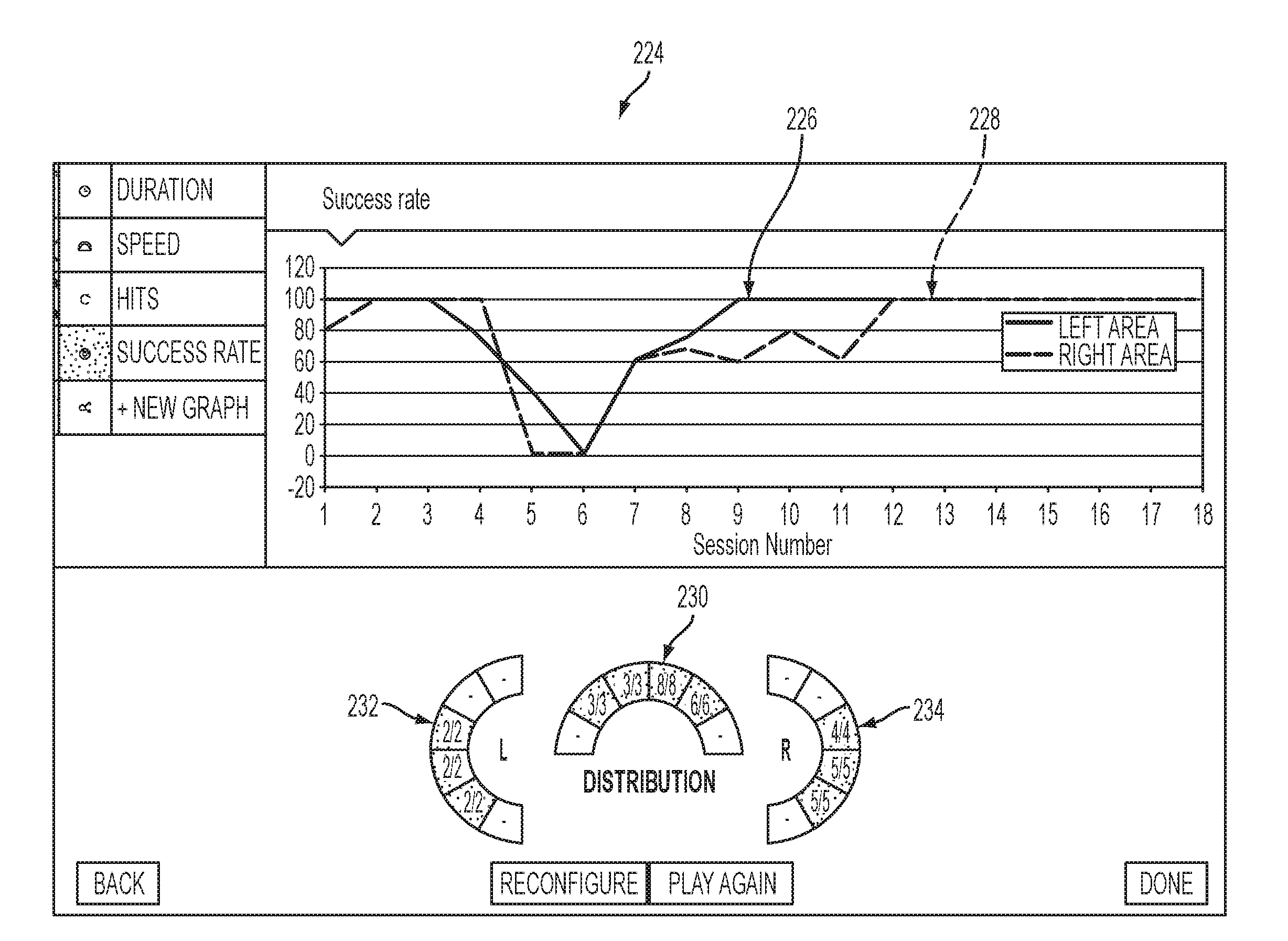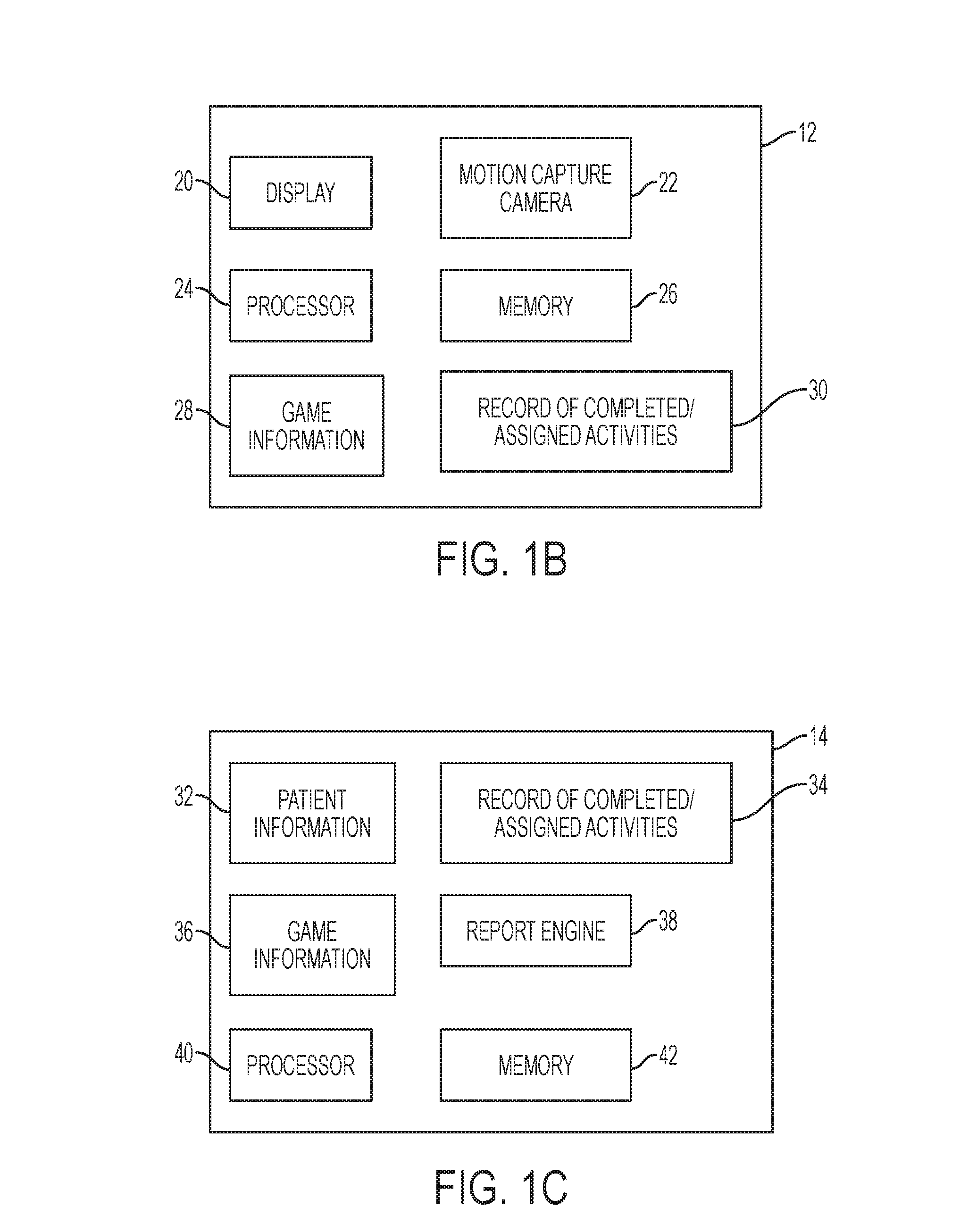System for diagnostic and treatment of physical and cognitive capabilities
a cognitive capacity and diagnostic technology, applied in the field of physical rehabilitation, can solve the problems of tens of billions of dollars in health care costs, prohibitively expensive and difficult to access and use, and the aging of the population,
- Summary
- Abstract
- Description
- Claims
- Application Information
AI Technical Summary
Benefits of technology
Problems solved by technology
Method used
Image
Examples
Embodiment Construction
[0043]The embodiment disclosed below is not intended to be exhaustive or limit the invention to the precise form disclosed in the following detailed description. Rather, the embodiment is chosen and described so that others skilled in the art may utilize its teachings.
[0044]One of ordinary skill in the art will realize that the embodiments provided can be implemented in hardware, software, firmware, and / or a combination thereof. Programming code according to the embodiments can be implemented in any viable programming language such as C, C++, HTML, XTML, JAVA or any other viable high-level programming language, or a combination of a high-level programming language and a lower level programming language.
[0045]A schematic illustrating an exemplary tele-health system 10 is shown in FIG. 1. The system 10 is comprised of a plurality of user interfaces or modules. The system 10 includes a game interface 12 that is operatively connected to an internet-based service or middleware 14. The mi...
PUM
 Login to View More
Login to View More Abstract
Description
Claims
Application Information
 Login to View More
Login to View More - R&D
- Intellectual Property
- Life Sciences
- Materials
- Tech Scout
- Unparalleled Data Quality
- Higher Quality Content
- 60% Fewer Hallucinations
Browse by: Latest US Patents, China's latest patents, Technical Efficacy Thesaurus, Application Domain, Technology Topic, Popular Technical Reports.
© 2025 PatSnap. All rights reserved.Legal|Privacy policy|Modern Slavery Act Transparency Statement|Sitemap|About US| Contact US: help@patsnap.com



